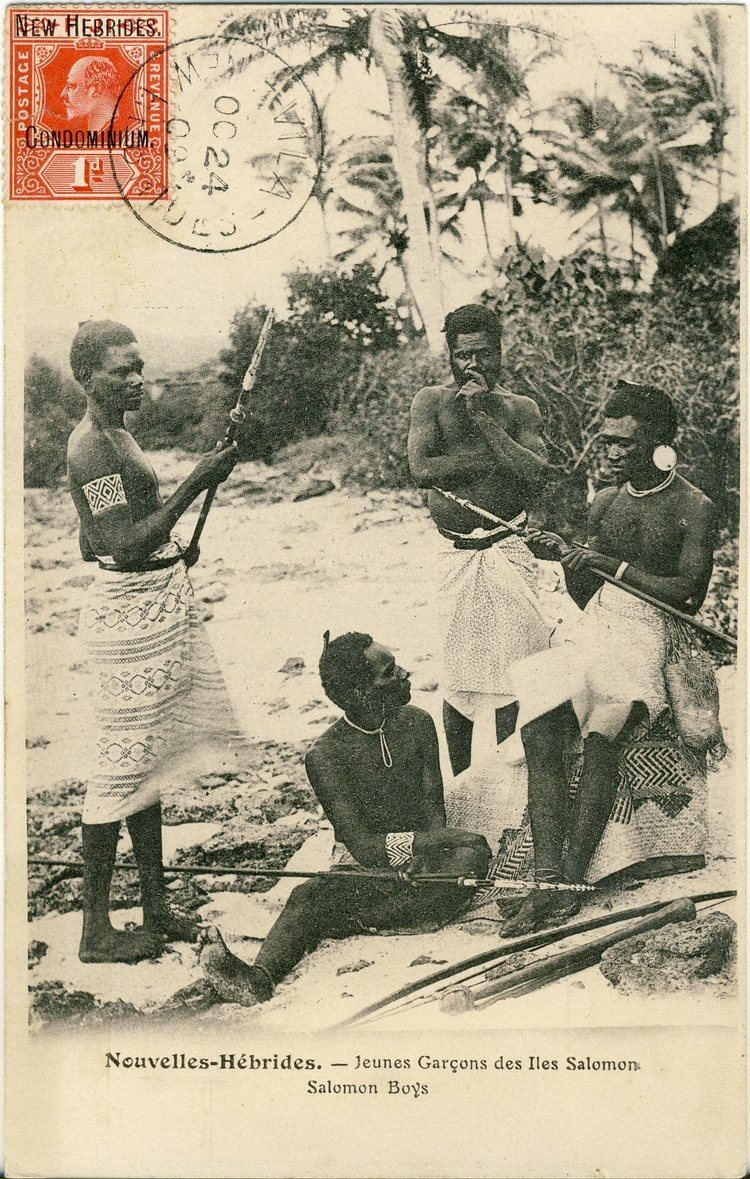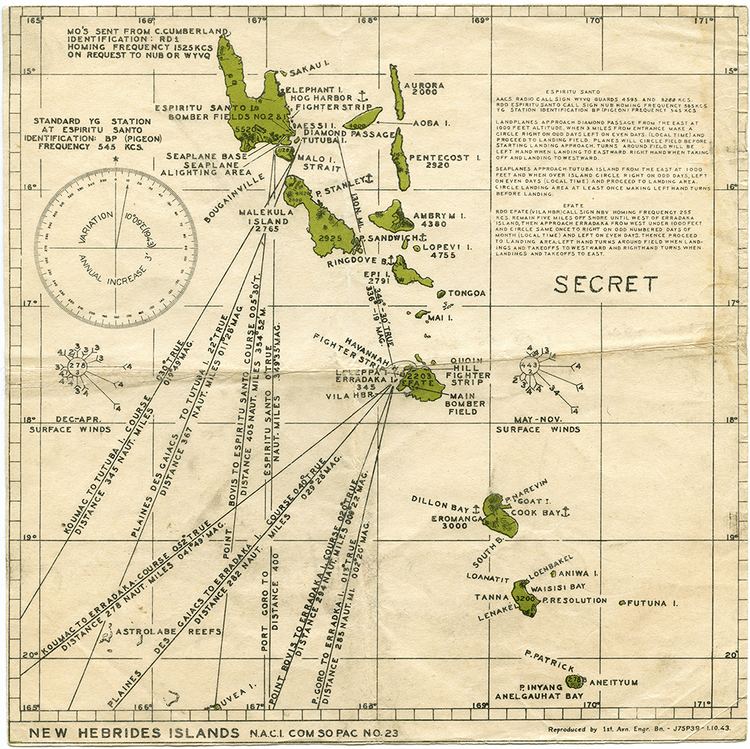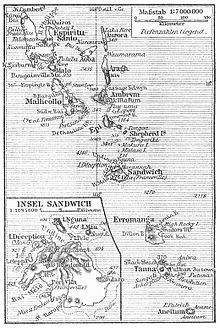Established 1906 Area 12,189 km² Currency New Hebrides franc | Political structure Special territory 1976 est. 100,000 Founded 1906 Date dissolved 1980 | |
 | ||
1976 12,189 km² (4,706 sq mi) Islands Espiritu Santo, Malakula Island, Lelepa Island Points of interest Champagne Beach, Aore Island, Nanda Blue Hole, Matevulu Blue Hole, Mount Tabwemasana | ||
New Hebrides, named for the Hebrides Scottish archipelago, was the colonial name for the island group in the South Pacific Ocean that now is the nation of Vanuatu. Native people had inhabited the islands for three thousand years before the first Europeans arrived in 1606 from a Spanish expedition led by Pedro Fernandes de Queirós. The islands were colonized by both the British and French in the 18th century, shortly after Captain James Cook visited the islands.
Contents
- Eleanor roosevelt visits espiritu santo new hebrides aore island rec center 1943 full
- Politics and economy
- References

The two countries eventually signed an agreement making the islands an Anglo-French condominium, which divided the New Hebrides into two separate communities: one Anglophone and one Francophone. This divide continues even after independence, with schools teaching in either one language or the other, and with different political parties. The condominium lasted from 1906 until 1980, when the New Hebrides gained their independence as Vanuatu.
Eleanor roosevelt visits espiritu santo new hebrides aore island rec center 1943 full
Politics and economy

The New Hebrides was a rare form of colonial territory in which sovereignty was shared by two powers, Britain and France, instead of just one. Under the Condominium there were three separate governments – one French, one British, and one joint administration that was partially elected after 1975.

The French and British governments were called residencies, each headed by a resident appointed by the metropolitan government. The residency structure greatly emphasized dualism, with both consisting of an equal number of French and British representatives, bureaucrats and administrators. Every member of one residency always had an exact mirror opposite number on the other side who they could consult. The symmetry between the two residencies was almost exact.

The joint government consisted of both local and European officials. It had jurisdiction over the postal service, public radio station, public works, infrastructure, and censuses, among other things. The two main cities of Santo and Port Vila also had city councils, but these did not have a great deal of authority.

While initial settlers were predominantly British living in Australia, the late 19th century saw an influx of French. Within a few decades, there were twice as many French on the islands as there were British, prompting a multitude of petitions to cede power to either the French or the British. Despite this, the two nations came together to form a condominium, a specialized form government where both nations would have all of their own administrations and jointly rule the islands. The only place they came together was in the Joint Court. As Mander describes, “The Joint Court was the key to the situation and much was to depend upon it….Three judges–one British, one French, and the third nominated by the King of Spain–were to comprise the court.” This meant convictions in court were chosen based on either British or French law, depending on the circumstances.
Other than the Joint Court, everything existed in pairs. “Cynics called the Condominium ‘the Pandemonium', as the dual administration produced amazing duplication. There were two police forces with their own laws, including road laws, two health services, two education systems, two currencies, and two prison systems.” Additionally, there were separate British and French governments, which meant two immigration policies, two courts (outside of the Joint Court), two corporation laws, and inhabitants of the islands were given the choice as to which government they wanted to go under. For instance, if you were convicted, you could choose whether to be convicted under British or French law. As Miles put it, “The result was an inevitable clash of foreign policy and colonial mentality.”
The Condominium was not beneficial for NiVans, as they were “...officially stateless. [For instance,] To travel abroad, they needed an identifying document signed by both the British and the French resident commissioners.” Inevitably, this led to revolt across the islands, with a multitude of revolutionary groups forming to attempt to create agency and self-government for themselves. It wasn’t until 1980 that Vanuatu gained independence and dropped the nomenclature of the New Hebrides.
Local people could choose whether to be tried under the British common law or the French civil law. Visitors could choose which immigration rules to enter under. Nationals of one country could set up corporations under the laws of the other. In addition to these two legal systems, a third Native Court existed to handle cases involving Melanesian customary law. There was also a Joint Court, composed of British and French judges. The President of the Joint Court was appointed by the King of Spain until 1939 when the post was abolished after the retirement of the last President, partly due to the abolition of the Spanish monarchy in 1931.
There were two prison systems to complement the two court systems. The police force was technically unified but consisted of two chiefs and two equal groups of officers wearing two different uniforms. Each group alternated duties and assignments.
Language was a serious barrier to the operation of this naturally inefficient system, as all documents had to be translated once to be understood by one side, then the response translated again to be understood by the other, though Bislama creole represented an informal bridge between the British and the French camps.
